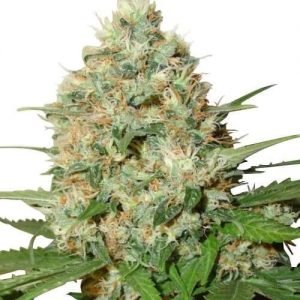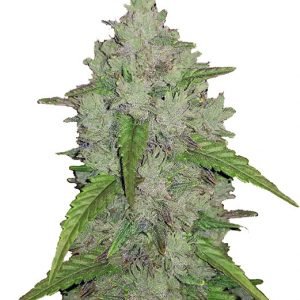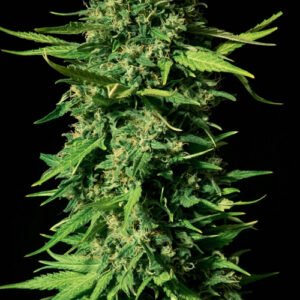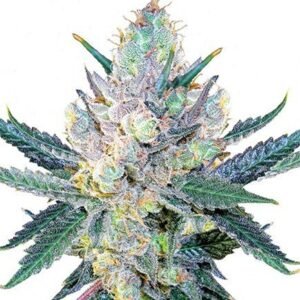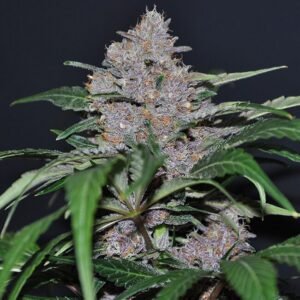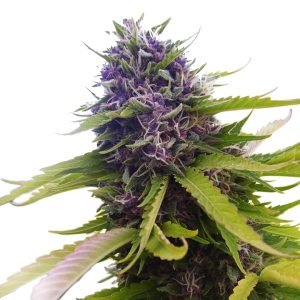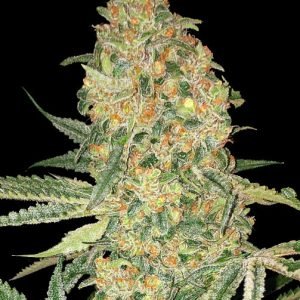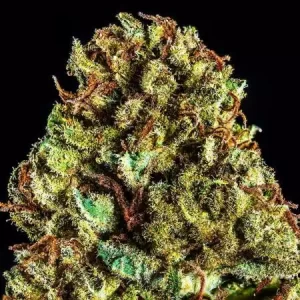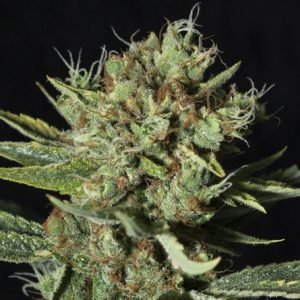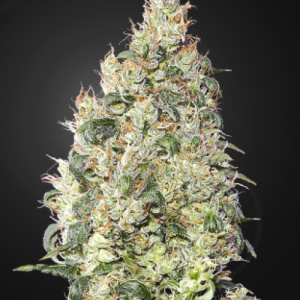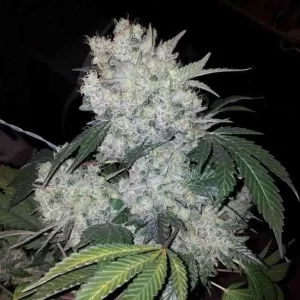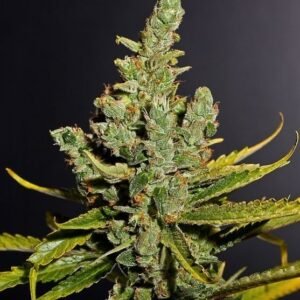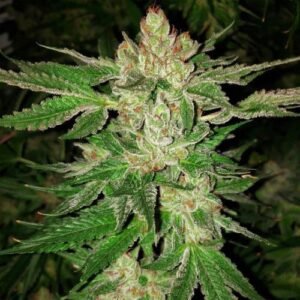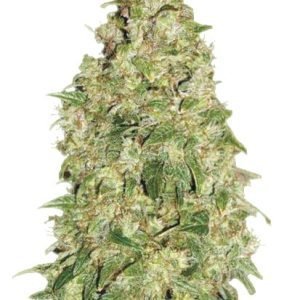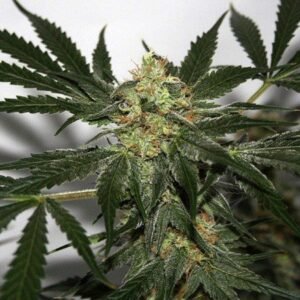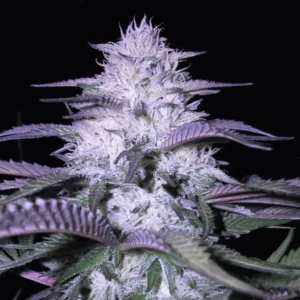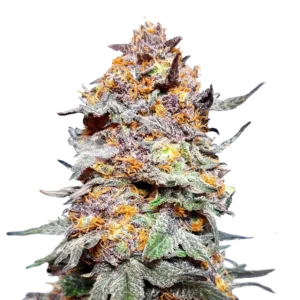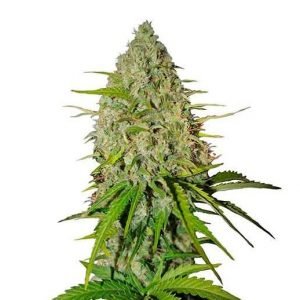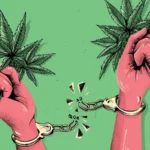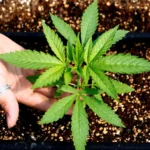
Is Cannabis a Gateway Drug Leave a comment
What is a Gateway Drug?
First things first we must define what a ‘Gateway Drug’ actually is. The Gateway hypothesis proposes a causal connection between different classes of drugs, suggesting that the use of “less harmful” substances increases the risk of using “harder drugs.” Certain substances like alcohol, tobacco, and Cannabis are commonly referred to as gateway drugs. According to this hypothesis, the use of legal drugs like tobacco and alcohol can lead to cannabis use, which then paves the way for the use of other illicit drugs such as cocaine, methamphetamines, and heroin.
The hypothesis implies that the use of mild drugs, including those mentioned above, may lead to the use of more potent drugs through a series of stages. This conclusion is drawn from observations that individuals who have used cocaine and heroin have previously used cannabis, and those who have used cannabis have previously used alcohol and tobacco. However, it is important to note that these associations may be influenced by the availability and societal attitudes towards drugs, rather than representing a direct causal pathway.
How does a Gateway Drug
Interact with the Brain?
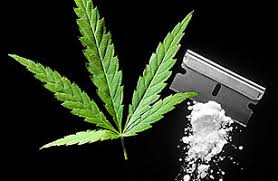
A gateway drug has the ability to modify the neuropathways in the brain. Studies conducted on animal models of addiction have revealed that animals who initiate the use of specific substances at a young age have a higher likelihood of developing addictive behaviors towards other substances. Postmortem examinations of these animals have shown alterations in certain brain regions, such as the reward system, when compared to normal animals. Consequently, it is inferred that early drug use with certain substances makes animals more susceptible to developing issues of substance abuse with other drugs. These experimental models bear resemblance to observational data in humans, which suggests that individuals who engage in early drug use are more prone to using other drugs later on.
Overall, research largely upholds the idea that the use of Cannabis increases the likelihood of subsequently using more potent illicit drugs, although there are some dissenting opinions on this matter.
The term “gateway drug” gained popularity during the 1980s. The concept behind it stems from the observation that individuals who engage in recreational substance use often begin with cannabis. Some argue that cannabis influences the neural pathways in the brain, leading people to develop a propensity for other drugs. However, there is insufficient evidence to substantiate these claims. While it is true that many individuals use cannabis prior to trying other substances, this correlation alone does not prove that cannabis use directly caused them to experiment with other drugs.
One hypothesis suggests that cannabis, similar to alcohol and nicotine, is typically more accessible and affordable compared to other substances. As a result, individuals who choose to use drugs are more likely to begin with cannabis. A study conducted in 2012 provided interesting insights. It noted that in Japan, where cannabis is not as readily available as it is in the United States, 83.2 percent of recreational substance users did not initiate their drug use with cannabis.

It is crucial to bear in mind that existing research has only established an association, not a causal relationship, between cannabis use and subsequent drug use. This means that there is no evidence suggesting that cannabis use directly causes the use of other drugs. The observed link between the two behaviors could be attributed to factors that commonly influence both behaviors, rather than a direct cause-and-effect relationship.
Interested in Growing Cannabis for Yourself? CG Australia source the freshest seeds from top breeders with careful and discreet packaging and local delivery with tracking. Check them out here – https://www.cgaustralia.com.au/cannabis-seeds-australia/
The Real Gateway Drug is 100% Legal
Why does Alcohol, the publicly accepted, seemingly safe and legal substance seem to get a pass?
We are all familiar with the idea that marijuana is considered a gateway drug, often emphasized by Republican presidential candidate Chris Christie and anti-drug groups. The argument is based on the fact that 99 percent of illicit drug users reportedly tried marijuana before moving on to other drugs. However, this notion can be somewhat weak when viewed in isolation, as it could also be true that 99 percent of drug users first tried common substances like coffee, soda, or chocolate milk before transitioning to stronger drugs.
To gain a better understanding of this issue, new research published in the Journal of School Health this month offers valuable insights. A team of researchers from Texas A&M and the University of Florida analyzed data from 2,800 U.S. 12th graders who participated in the Monitoring the Future study—an annual federal survey on teen drug use. The researchers aimed to determine which substances teenagers typically used as their first choice.
They give away their findings in the title of their paper: “Prioritizing Alcohol Prevention: Establishing Alcohol as the Gateway Drug and Linking Age of First Drink With Illicit Drug Use.” They found that “the vast majority of respondents reported using alcohol prior to either tobacco or marijuana initiation.”
Not only that, but of those three main substances — alcohol, tobacco and marijuana — kids were the least likely to start using pot before the others.
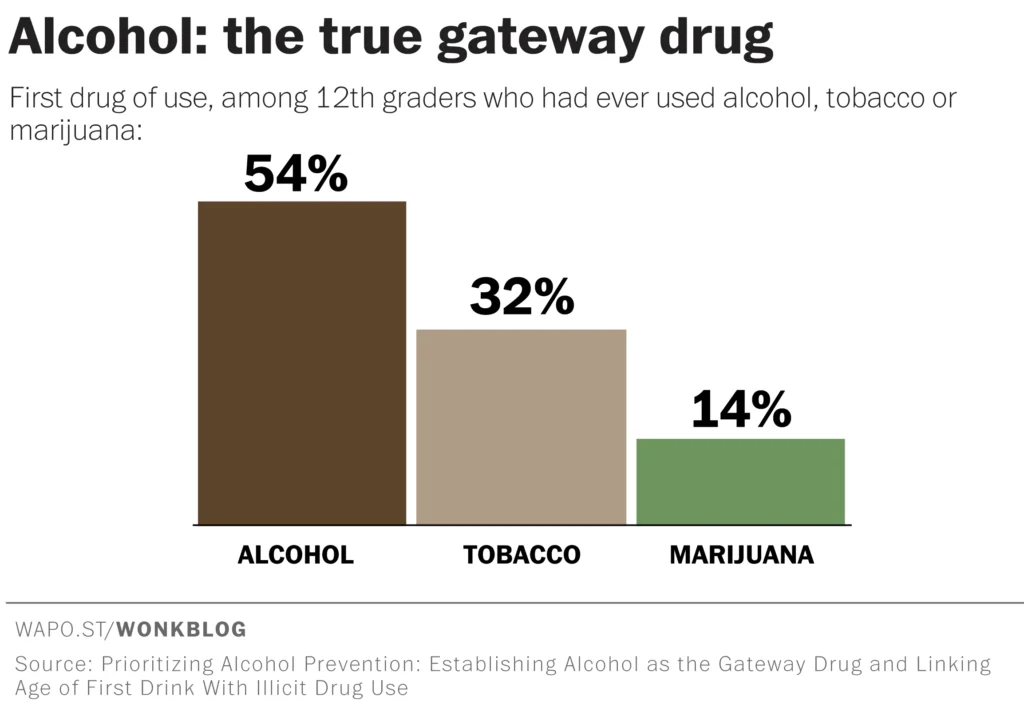
So, is the Gateway Hypothesis for Cannabis completely false?
The latest DPRC (Drug Policy Research Center) research reveals that the factors contributing to the notion of marijuana being a gateway drug can also be attributed to an alternative explanation. According to this perspective, it is not marijuana use itself but rather individuals’ opportunities and specific inclinations towards drug usage that influence their likelihood of trying harder drugs. The research does not invalidate the gateway theory; instead, it demonstrates the plausibility of another explanation.
In 1999, the esteemed Institute of Medicine conducted a thorough analysis of the evidence and arrived at a similar finding:
The progression of drug use from adolescence to adulthood follows a remarkably consistent pattern. As the most widely used illicit drug, marijuana tends to be the first illicit drug that most individuals encounter. Consequently, it is not surprising that many users of other illicit drugs have used marijuana before. Interestingly, the majority of drug users start with alcohol and nicotine before moving on to marijuana, often before reaching the legal age.
In this context, marijuana use can indeed be considered a “gateway” drug because it typically precedes the initiation of other illicit drug use. However, since underage smoking and alcohol consumption typically precede marijuana use, marijuana is not the most common or primary “gateway” to illicit drug use. The available evidence does not conclusively establish a causal link between the drug effects of marijuana and the subsequent abuse of other illicit drugs.
Are Gateway Drugs Addictive?
Gateway drugs are not always synonymous with addictive drugs. In fact, when individuals misuse non-addictive drugs, it can still pave the way for them to explore and potentially become involved with addictive drugs.
This offers an argument that Cannabis is a gateway drug since it is more commonly regarded as a non-addictive compound. However, we must truly identify what makes a drug addictive and if Cannabis falls under this category.
Marijuana use has been shown to lead to the development of problematic use, referred to as a marijuana use disorder, and in severe cases, it can manifest as an addiction. Recent data indicates that approximately 30% of marijuana users may experience some degree of marijuana use disorder. Individuals who start using marijuana before the age of 18 are at a significantly higher risk, being four to seven times more likely to develop a marijuana use disorder compared to adults.
Marijuana use disorders often involve dependence, where individuals experience withdrawal symptoms when they stop using the drug. Frequent marijuana users commonly report feelings of irritability, mood and sleep disturbances, reduced appetite, cravings, restlessness, and various forms of physical discomfort. These symptoms typically peak within the first week after quitting and can last up to two weeks. The dependence occurs because the brain adapts to the presence of large amounts of the drug by reducing the production of and sensitivity to its own endocannabinoid neurotransmitters.
So, it is hard to hold the argument that Cannabis could be a gateway drug simply due to it not being addictive since it does hold a relatively prevalent addictive nature even though it may not be perceived that way.
Is Youth More Susceptible to Addictive Drugs?
It is widely acknowledged that teenagers and young adults are more susceptible to addiction and reckless behavior compared to other age groups. Moreover, when they do fall into addiction, the repercussions are frequently more profound.
To address these issues, a recent gathering of neurologists took place at the “Sixth Annual Aspen Brain Forum: The Addicted Brain and New Treatment Frontiers.” This forum was jointly presented by Science Translational Medicine and the New York Academy of Sciences.
As per the 2015 Monitoring the Future survey, approximately 35 percent of 12th-grade students confessed to consuming alcohol within the last 30 days. Nearly 40 percent of them admitted to being intoxicated in the past year. Additionally, six percent disclosed that they smoke marijuana daily, surpassing the number of tobacco cigarette smokers (5.5 percent), which has been steadily declining in recent years.
The discussions held by neurologists often delve into highly specialized and intricate aspects of the brain, being the body’s most complex organ. However, The New York Academy of Sciences provided a summary of their findings, drawing on new research to highlight specific conclusions about addiction among teenagers and young adults. Moreover, novel ideas on how to prevent and treat addiction in this demographic are also emerging. Here are some key takeaways from the forum.
Equip young individuals with factual information about addiction, rather than relying solely on slogans such as "Just say no."
The current generation of young people seeks to grasp the scientific explanations behind various phenomena, including the dangers of drug and alcohol usage. It is crucial to break down this information in a way that resonates with them and instills belief in the potential hazards involved.
In essence, the brains of young individuals are still undergoing development. Studies indicate that heavy drinking and marijuana use among young people may lead to reduced brain volume and impaired cognitive performance, as stated in the briefing.
Since the prefrontal cortex is not yet fully developed during adolescence, young individuals face challenges in making rational decisions and regulating their emotions. These factors can be particularly risky when combined with offers to experiment with drugs and alcohol.
Dr. Nora D. Volkow, director of the National Institute on Drug Abuse, elaborated on weak connections within the prefrontal cortex itself and between the prefrontal cortex and the nucleus accumbens, a component of the brain’s reward system in her keynote address. She highlighted that even children raised in supportive environments could be susceptible to addiction, as she has extensively studied how drugs affect the brain using brain imaging techniques.
During the Aspen Brain Forum, Cheryl Healton from New York University College of Public Health emphasized that there has been little focus on public education and cultural strategies to prevent drug experimentation in the first place.
Disseminate accurate information about the effects of Marijuana among teenagers and young adults.
The fundamental truth is that today’s marijuana is considerably more potent than what was available in the 1960s. However, with the widespread legalization of marijuana, young individuals understandably question its significance.
To put it in perspective, consider prescription medications. Different drugs have different effects, and in the era of medical marijuana, various strains can affect people in distinct ways. It’s essential to match the right strain with the individual’s needs. For example, a hyperactive person should avoid strains meant to stimulate someone who is feeling depressed, just as a person with heart problems wouldn’t be prescribed a stimulant. Unfortunately, many people, whether obtaining marijuana legally or not, remain unaware of what they are consuming.
Susan R.B. Weiss from the National Institutes of Drug Abuse emphasized that factors like the dosage, strain, and potency of marijuana can lead to vastly different effects on individuals.
In a report by Healthline News, cannabis scientist Andy LaFrate presented his findings from testing marijuana samples from Colorado in a laboratory during a meeting of the American Chemical Society. The marijuana was not only found to be contaminated with fungi but also had THC levels more than two to three times higher than those found three decades ago.
This raises concerns about the impact on young brains. Although some research results are conflicting, making generalizations difficult, there is more consistent data linking cannabis use to psychosis. Several studies suggest that early cannabis use may increase the risk of developing schizophrenia, particularly in individuals with genetic risk factors for the disease, as stated in the briefing.
Initiate early education for children on how to manage stress in a healthy manner.
Many young individuals often hear the phrase, “Wait until you feel the stress of the real world,” implying that adulthood brings more significant challenges. However, the stress experienced during adolescence can be equally overwhelming. Not every child grows up in a peaceful home, and when hanging out with friends, the pressure to conform may lead to experimenting with substances like alcohol, marijuana, or even prescription pills taken from a parent’s medicine cabinet at parties. For those already genetically predisposed to addiction, this could be the beginning of a serious substance use problem.
Diana H. Fishbein from the University of Pennsylvania highlighted that emerging articles show promising possibilities for altering the trajectory of children exposed to stress through intervention.
One such intervention is the PATHS Curriculum, which focuses on teaching self-regulation skills. The curriculum targets students in kindergarten through second-grade in Baltimore city schools and has shown positive results. It improves inhibitory control, stress physiology, and emotional regulation, effectively reducing behavioral problems.
The PATHS Curriculum, which stands for Promoting Alternative Thinking Strategies, imparts essential life skills like self-control, emotional understanding, fostering positive self-esteem, building relationships, and developing interpersonal problem-solving abilities. By introducing such programs early on, we can equip children with effective tools to cope with stress in healthier ways and potentially prevent substance use issues down the line.
Conclusion
Combining all the information, there is insufficient evidence to support the claim that marijuana acts as a “gateway drug,” and even if legalized, there is no indication that a gateway effect would be exacerbated. On the contrary, some evidence suggests that marijuana legalization might deter individuals from transitioning to harder, more hazardous substances.
However, it is essential to recognize that marijuana is not entirely devoid of risks. Potential dangers associated with its use include dependency, excessive consumption leading to accidents and non-fatal overdoses, resulting in mental distress and anxiety, as well as the possibility of triggering psychotic episodes.
Nonetheless, the gateway hypothesis lacks empirical backing. As long as the evidence remains unchanged, discussions about marijuana should center around tangible issues rooted in scientific evidence.
Afghan Kush Feminized
10% Sativa, 90% Indica | THC 21% | Afghan Kush is an Indica cannabis strain originating from the renowned Hindu Kush mountain range, which stretches along the Afghan-Pakistan border. It is celebrated for its quintessential indica characteristics, producing large, resinous buds that deliver the classic body stone effect cherished by many users.
——————————————————————————
Is it legal to buy Cannabis seeds in Australia?
How can I buy Cannabis seeds in Australia?
AK-47 Feminized
Ak-47 was orginally created by the Netherland’s Serious Seeds in 1992 and has won 16 awards including the High Times Cannabis Cup. People love this strain around the world for its high THC content, strong flavour and high energy effects.
——————————————————————————
Is it legal to buy Cannabis seeds in Australia?
How can I buy Cannabis seeds in Australia?
Amnesia Haze Feminized
10% Indica – 90% Sativa | THC 21-25% | This is THE legit Dutch classic Sativa dominent powerhouse that is the proud winner of multiple Cannabis cups. This uplifter has a lemony, incense and cederwood flavour. Amnesia has a slightly longer growth phase overall, but this translates into massive yields and is well worth your attention for a truly supreme quality end product that is sure to please those aiming for a happy and uplifting high.
——————————————————————————
Is it legal to buy Cannabis seeds in Australia?
How can I buy Cannabis seeds in Australia?
Amnesia Platinum Feminized
70% Sativa, 30% Indica | THC 16 – 20% | The Original Amnesia Platinum was developed by a Dutch breeder who combined a renowned Haze female with a Northern Lights male. Due to its great success and high demand, the breeder has now released the first Original Amnesia Platinum Feminised seeds. This Sativa variety, which flowers like an Indica, grows rapidly, is highly productive and maintains a manageable height. The plants are extremely potent, boast an exceptionally sweet Haze aroma, and are covered in abundant resin crystals.
——————————————————————————
Is it legal to buy Cannabis seeds in Australia?
How can I buy Cannabis seeds in Australia?
Banana Monkey Feminized Seeds
30% Sativa, 70% Indica | THC 25-28% | Our Banana Monkey has an aroma of ripe bananas and fruity spice when you open the jar and a flavor profile that lives up to its name. Banana Monkey is tranquilizing and a bit of a creeper, as it slowly yet unrelentingly produces a deep whole-body relaxation thanks to the strong Indica influence. You’ll find your mind lifted into a state of happiness that has you feeling free of any bad moods or negative thoughts.
——————————————————————————
Is it legal to buy Cannabis seeds in Australia?
How can I buy Cannabis seeds in Australia?
Blak Domina Feminized
10% Sativa, 90% Indica | THC 20% | Black Domina is an Indica marijuana strain created by combining Northern Lights, Ortega, Hash Plant, and Afghani. This diverse blend produces deeply relaxing and sedative effects. Black Domina is known for its spicy pepper aroma and flavor, making it a popular choice among medical marijuana patients seeking relief from insomnia.
——————————————————————————
Is it legal to buy Cannabis seeds in Australia?
How can I buy Cannabis seeds in Australia?
Blue Cheese
40% Sativa, 60% Indica | THC 19% | Blue Cheese is an Indica strain created by crossing a Blueberry male with a female U.K. Cheese, a phenotype of Skunk #1. This combination results in a unique flavor profile that blends the sweet taste of berries with the savory notes of blue cheese, reminiscent of the original Cheese strain. Blue Cheese’s potent effects are perfect for unwinding after a long day, offering relief from muscle spasms, pain, and stress.
——————————————————————————
Is it legal to buy Cannabis seeds in Australia?
How can I buy Cannabis seeds in Australia?
Blue Dream
70% Sativa, 30% Indica | THC 19% | Blue Dream is a Sativa-dominant hybrid cannabis strain created by crossing Blueberry with Haze. Known for its balanced high, this strain offers both cerebral stimulation and full-body relaxation. With a THC content of 18% and low CBD levels, Blue Dream is popular among both beginners and experienced users. Its flavor profile is reminiscent of sweet berries, both in taste and aroma. Medical marijuana patients frequently choose Blue Dream to alleviate symptoms of depression, chronic pain, and nausea.
——————————————————————————
Is it legal to buy Cannabis seeds in Australia?
How can I buy Cannabis seeds in Australia?
Blueberry Feminized
70% Indica – 10% Sativa – 20% Ruderalis | THC 19-20% | This berry-tasted strain is a cross between Afghani Indica x Highland Thai Sativa x Purple Thai Sativa. This strain promotes calmness and ease and is great for combating anxiety and stress.
How can I buy Cannabis seeds in Australia?
Bruce Banner Feminized
25% Indica – 55% Sativa – 20% Ruderalis | THC 23% | This strain is followed by a cult over the years. It is loved for its distinct earthy, woody flavor with a sweet strawberry undertone. It is great for an energizing, motivational high filled with creativity and warmth. This plant is medium-sized and grows well indoors and outdoors.
——————————————————————————
Is it legal to buy Cannabis seeds in Australia?
How can I buy Cannabis seeds in Australia?
Bubblegum Feminized
80% Indica – 20% Sativa | THC 20 – 27% | This strain has large bubbly buds with a powerful high that offers great emotional and physical relief. This fruitful strain offers flavors of bubblegum, fruits, spices, bitterness, and earthiness.
——————————————————————————
Is it legal to buy Cannabis seeds in Australia?
How can I buy Cannabis seeds in Australia?
Caramel King Feminized
75% Indica – 5% Sativa | THC 20%
This exciting strain converges a cocktail of the top indica strains we all know and love today: Blue Black x Maple Leaf Indica x White Rhino. Auto Caramel King has a sweet flavor and aroma, with notes of caramel.
It is a fast hitter and has a very relaxing body-stoned effect. Brain activity will increase along with a relaxing body effect that isn’t too heavy, still allowing movement and mobility. Making this perfect for a good laugh with your friends at Saturday’s barbecue. Medicinally she is highly valued for her antidepressant and anxiolytic properties.
——————————————————————————
Is it legal to buy Cannabis seeds in Australia?
How can I buy Cannabis seeds in Australia?
CBD Cheese Feminized
60% Indica – 40% Sativa | THC 0.50% | CBD 15 – 17% | This legendary strain has an intense aroma of old cheese and an earthy, mossy taste, with hints of flowers. CBD Cheese delivers a moderately potent and long-lasting high, with a very nice sensation of well-being and happiness. Due to high CBD levels, this strain showcases many anxiolytic and anti-inflammatory properties and is great for medical use.
——————————————————————————
Is it legal to buy Cannabis seeds in Australia?
How can I buy Cannabis seeds in Australia?
CBD Gold Feminized
THC 4 – 6% | CBD 7 -10% | This strain is a medicinal Indica dominant plant that is extremely pleasant and aromatic. It provides a powerful, long-lasting body high that is perfect for relaxing.
——————————————————————————
Is it legal to buy Cannabis seeds in Australia?
How can I buy Cannabis seeds in Australia?
CBD Indica King Feminized
80% Indica – 20% Sativa | THC 0.70 – 0.90% | CBD 20 – 24% | Our CBD Indica King Strain is top-quality and best known for its potent effects and relaxing properties. This unique strain packs the right ratio of a tangy grapefruit flavor with tasty fruit cocktail aromas. When Grown and harvested with care, this CBD flower is packed with beneficial cannabinoids, terpenes, and flavonoids that work together to deliver a truly satisfying relaxing body-stoned, long-lasting experience.
——————————————————————————
Is it legal to buy Cannabis seeds in Australia?
How can I buy Cannabis seeds in Australia?
CBD White Widow Feminized
THC 4 – 6% | CBD 7 -10% | This strain is a medicinal Indica dominant plant that is extremely pleasant and aromatic. It provides a powerful, long-lasting body high that is perfect for relaxing.
——————————————————————————
Is it legal to buy Cannabis seeds in Australia?
How can I buy Cannabis seeds in Australia?
Cheese Feminized
20% Sativa, 80% Indica | THC 18-20% | Cheese is a renowned strain that originated in the United Kingdom. It is a unique female phenotype of Skunk #1, which is a hybrid of Afghani (indica), Acapulco Gold (sativa), and Columbian Gold (sativa). This strain preserves the uplifting effects of a sativa, making it popular among those dealing with stress and anxiety. Its potent body relaxation helps alleviate chronic pain and is beneficial for treating insomnia. Additionally, Cheese is frequently used to stimulate appetite.
——————————————————————————
Is it legal to buy Cannabis seeds in Australia?
How can I buy Cannabis seeds in Australia?
Chronical Feminized
60% Sativa, 40% Indica | THC 19-25% | This strain is known for its impressive yields, thanks to its robust hybrid genetics—a blend of Northern Lights, Skunk x Northern Lights, and AK-47. With a medium height and a less branchy structure, it’s not ideal for topping or super cropping. However, it excels in a Sea of Green setup, allowing growers to concentrate on the main colas and maximize plant density in limited space. Chronical delivers astonishing yields, but proper curing is essential to preserve its delightful sweet aroma.
——————————————————————————
Is it legal to buy Cannabis seeds in Australia?
How can I buy Cannabis seeds in Australia?
Cocopopo Feminized
5% Indica – 75% Sativa – 20% Ruderalis | THC 20 – 25% | This exciting genetic combination is birthed from O.G. Chocolate x Cannalope Haze. It is easy to grow and takes less effort to maintain than other strains. Enjoy the sweet, bitter chocolate taste with Cocopopo.
——————————————————————————
Is it legal to buy Cannabis seeds in Australia?
How can I buy Cannabis seeds in Australia?
Coffee Rocket Feminized
70% Sativa, 30% Indica | THC 25-28% | Coffee Rocket has an earthy, yet sweet flavor and a nice citrusy aroma with a hint of grape. It has high THC. The wonderful Coffee Rocket strain has rapid effects but will provide nice relaxation of the muscles and creative energy along with slight euphoria. Coffee Rocket is versatile and can be smoked day or night.
——————————————————————————
Is it legal to buy Cannabis seeds in Australia?
How can I buy Cannabis seeds in Australia?
Dosidos Rocketos Feminized
30% Sativa, 70% Indica | THC 26 – 32% | Introducing your new green companion! This Indica-dominant strain is packed with THC and boasts an incredible taste and aroma. It’s versatile, thriving indoors with the Screen of Green technique or Super Cropping, and flourishing outdoors in sunlight. Plus, it’s resilient enough to withstand colder climates. Enjoy legendary potency and unique effects with this exceptional all-round variety!
——————————————————————————
Is it legal to buy Cannabis seeds in Australia?
How can I buy Cannabis seeds in Australia?
Dubai Poison Feminized
100% Sativa | THC 8-20% Dubai Poison has a really complex flavor and aroma, with notes of lemon and spices. The effect it provides is potent, clear, and cerebral. This legendary strain has gained popularity worldwide for it’s energetic, uplifting effects. Durban is the perfect strain to help you stay productive through a busy day when exploring the outdoors, or to help you get creative.
——————————————————————————
Is it legal to buy Cannabis seeds in Australia?
How can I buy Cannabis seeds in Australia?
Early Top Skunk Feminized
35% Sativa, 65% Indica | THC 15 – 20% | Feminised Early Top Skunk seeds combine Skunk #1 and Early Pearl, creating hardy outdoor plants with dense, resin-coated buds. Early Pearl makes these plants mold-resistant and triggers early flowering from late July to late September. Skunk #1 ensures a high-quality yield. Ideal for all growers, this strain is reliable, easy to grow, and consistently produces top-grade cannabis.
——————————————————————————
Is it legal to buy Cannabis seeds in Australia?
How can I buy Cannabis seeds in Australia?
Euforia Special Feminized
30% Sativa | 70% Indica | THC 18 – 20% | Euforia Special blooms with heavy flowers on long branches with short internodes. During the vegetative stage, some plants may resemble Haze varieties, but their Indica traits become prominent once flowering begins. The plants are robust and have earned a lasting reputation among dedicated growers worldwide.
——————————————————————————
Is it legal to buy Cannabis seeds in Australia?
How can I buy Cannabis seeds in Australia?
Gelato Feminized
70% Indica – 30% Sativa | THC 21-27% | This strain is an absoluate corker! One of the nicests strains going around in our opinion and very under rated. Super strong, Very crystally large(ish) buds with very big yields. It’s fairly straight forward to grow and super strong.
——————————————————————————
Is it legal to buy Cannabis seeds in Australia?
How can I buy Cannabis seeds in Australia?
Godfather OG Feminized
40% Sativa | 60% Indica | THC 19% | Godfather OG, also known as “Godfather,” “The Don of All OG’s,” and “OG Godfather,” is a powerful indica strain created by crossing XXX OG and Alpha OG. This strain delivers sedating and relaxing effects, making it ideal for medical marijuana patients seeking relief from insomnia and pain.
Flavor Profile Godfather OG has a spicy and kushy flavor with subtle grape undertones.
THC Levels and Usage With high THC levels around 28%, consumers with low THC tolerance should only use Godfather OG in small doses.
——————————————————————————
Is it legal to buy Cannabis seeds in Australia?
How can I buy Cannabis seeds in Australia?
Gorilla Glue Feminized
50% Indica – 50% Sativa | THC 20-26% | One of the strongest cannabis strains available this one is recommended for the serious marijuana consumer! This popular strain has also won several cannabis awards like the Michigan and Los Angeles Cannabis Cups in 2014, and the High Times Jamaican World Cup.
——————————————————————————
Is it legal to buy Cannabis seeds in Australia?
How can I buy Cannabis seeds in Australia?
Granddaddy Purple Feminized
25% Sativa | 75% Indica | THC 17% | Granddaddy Purple, also known as “Grand Daddy Purp,” “Granddaddy Purps,” “GDP,” and “Grandaddy Purple Kush,” is an indica strain popularized in 2003 by Ken Estes. A cross of Mendo Purps, Skunk, and Afghanistan, it boasts a complex grape and berry aroma from its Mendo Purps and Afghanistan parents and a compact bud structure from Skunk. Its deep purple flowers are coated in white crystal resin. GDP delivers strong mind and body effects, combining cerebral euphoria with physical relaxation. It’s often used to relieve pain, stress, insomnia, appetite loss, and muscle spasms. GDP yields large harvests, ready in about 60 days indoors.
——————————————————————————
Is it legal to buy Cannabis seeds in Australia?
How can I buy Cannabis seeds in Australia?
Grapefruit Feminized
20% Indica – 80% Sativa | THC 16-20%
The Vancouver, Canada staple…. This 80% Sativa strain has a sweet and fruity aroma similar to the smell of ripe grapefruit It’s an 80’s old secret mix of Cinderalla 99 with a mystical grapefruit flavoured Sativa.
With the smell of pineapple and grapefuit this has an uplifting & stimulating high good for focus, creativity and pleasure.
——————————————————————————
Is it legal to buy Cannabis seeds in Australia?
How can I buy Cannabis seeds in Australia?
Green Candy Feminized
40% Indica – 60% Sativa | THC 20-24% | Green Candy has an intensely fruity aroma and flavor, with notes of mango, pineapple, exotic wood, and incense. The effect is stimulating, focused, and energizing, providing a cerebrally powerful Sativa-like high. Only a few puffs of this potent beauty will allow your stress and anxiety to melt away along with waves of euphoria.
Is it legal to buy Cannabis seeds in Australia?
How can I buy Cannabis seeds in Australia?
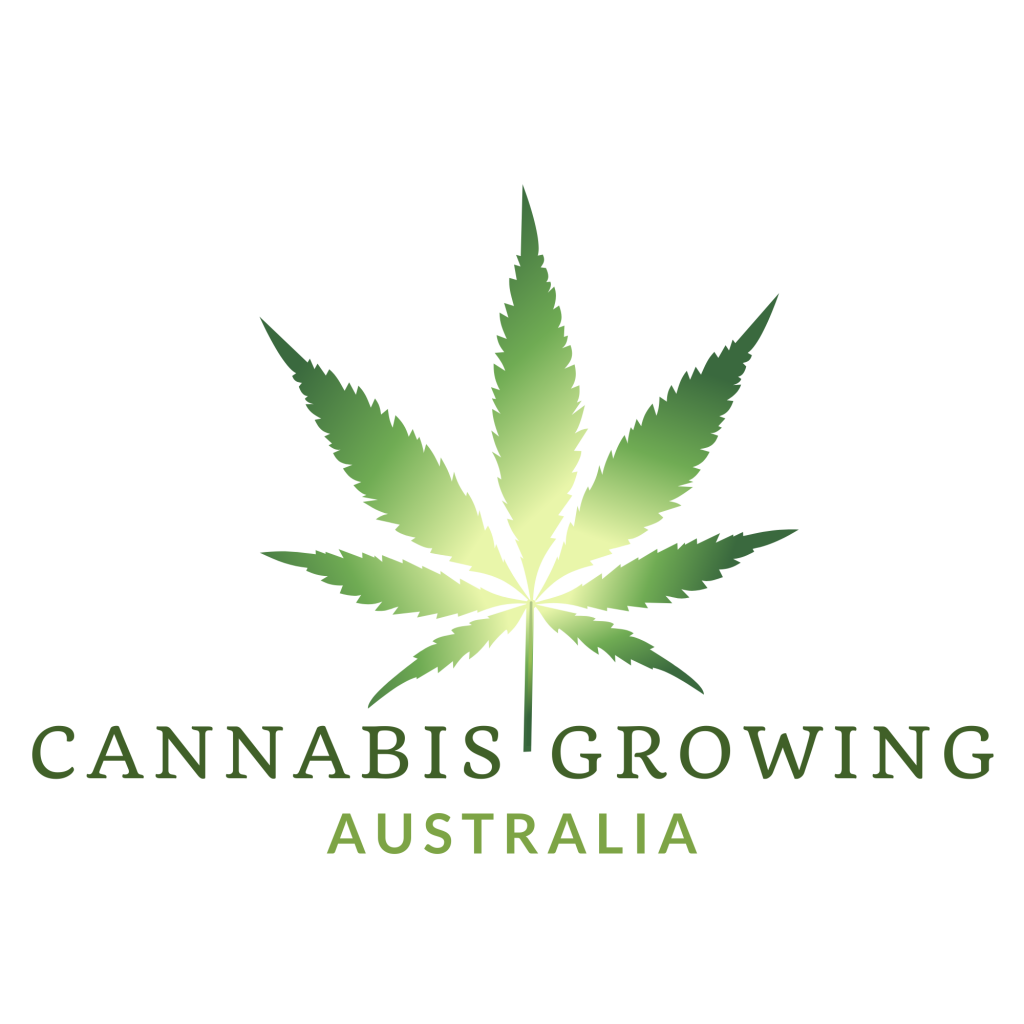
Our deep love of plants and fascination with Cannabis has enabled over 25 years of successful small scale Marijuana cultivation from indoor hydroponics, greenhouses and outdoor growing set-ups.
As Cannabis laws around the world change, *we support the movement toward freedom of choice for responsible, consenting adults who wish to experience the joy and wonder of growing a Cannabis plant.


